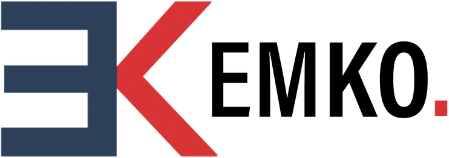Three tech opportunities every manufacturing business can implement now
Customers today expect higher quality products, designed in less time, at lower cost. This puts significant pressure on small manufacturing companies, many of whom struggle to survive in an age of conglomerates and consolidation. Luckily, technology that was once only available to global powerhouses can now be leveraged by smaller players to level the playing field. Below are 3 pieces of technology that can be used to improve product quality, speed design iterations, and lower costs when introducing new products.
1. Computer Aided Design (CAD) Software
Gone are the days of drafting tables and physical blueprints. CAD software allows designs to be built up, piece by piece, on a computer before being turned into blueprints for production. While this technology isn’t new (it’s been around since the 1960s) it has taken gigantic leaps forward in the past decade.
Starting with the basics, CAD software allows individual components (think nuts, bolts, castings, sheet-metal, etc.) to be modelled in 3 dimensions with complete precision. Individual components can then be combined into an assembly, allowing you to screen for potential design issues such as parts not fitting together or being impossible to assemble as designed. Some software will even help you visualize manufacturing tolerances; imagine being able to see that some fraction of manufactured parts won’t fit together and addressing the issue before you’ve ever even made it to the assembly line!
CAD software also lets you output and update blueprints easily. If a significant change is needed, you can swap out individual parts or sub-assemblies with updated versions and generate a new blueprint in minutes instead of spending hours hunched over a drafting table. Together, these benefits let you save time and money, and provide higher quality products to your customers.
2. Digital stress testing
On top of being useful by itself, CAD also allows you to use several auxiliary technologies to supercharge your design process. For example, once you have a CAD model you can use it to stress test your design, identify potential failure mechanisms and their root causes, and decide how to fix them. Again, all of this can be done without ever building a prototype or spending a dime on manufacturing through the magic of Finite Element Analysis (FEA).
FEA takes a big problem with no mathematical solution and breaks it into a lot of tiny approximations that DO have solutions, which can then tell you the stresses, strains, heat transfer, and deformation in an object or assembly while it’s being used in a particular way. This is actually even more useful than it may seem, because while it helps minimize risk of failure and improve product quality, it also lets you remove any extra material or complexity thus reducing costs and increasing margins. Even better, while this technology used to require a super-computer and a team of PhDs to use, technological advances have made it possible to run these complex simulations on your laptop.
Running this testing isn’t as hard as you might think either. Technology has advanced drastically in the last decade, not only in terms of hardware but also software. There are several software packages for FEA, including a few open-source options, that have automated testing to various degrees. There are also other packages that do similar things for fluids (CFD), and electronics. Adopting this technology can not only further speed your product development process, but increase quality, and decrease costs, all with very little upfront investment.
3. 3D Printing
3D printing allows CAD designs to be turned into reality, allowing for faster prototyping, fitment, and potentially trial use of a new product before moving into a more standard prototype for final testing. Unlike with traditional prototypes, 3D printed designs can be made in minutes or hours instead of days or weeks. They also require little-to-no labor and significantly fewer tools.
As above, technology for 3D printing is also advancing rapidly, with higher quality parts being printed and more durable materials being used for printing. It is now possible to 3D print metals, opening up the possibility of manufacturing low-volume parts with 3D printers on an as-needed basis, effectively eliminating warehousing costs.
As technology continues to advance, cost of entry will continue to drop and use cases will expand. Companies that leverage technology effectively have an increasingly large advantage over those that do not. However, barriers to entry also decrease over time, with CAD and FEA having extremely low cost of adoption. Making a conscious effort to utilize technology effectively has the power to improve returns, but failing to do so can cause your company to be left behind.



